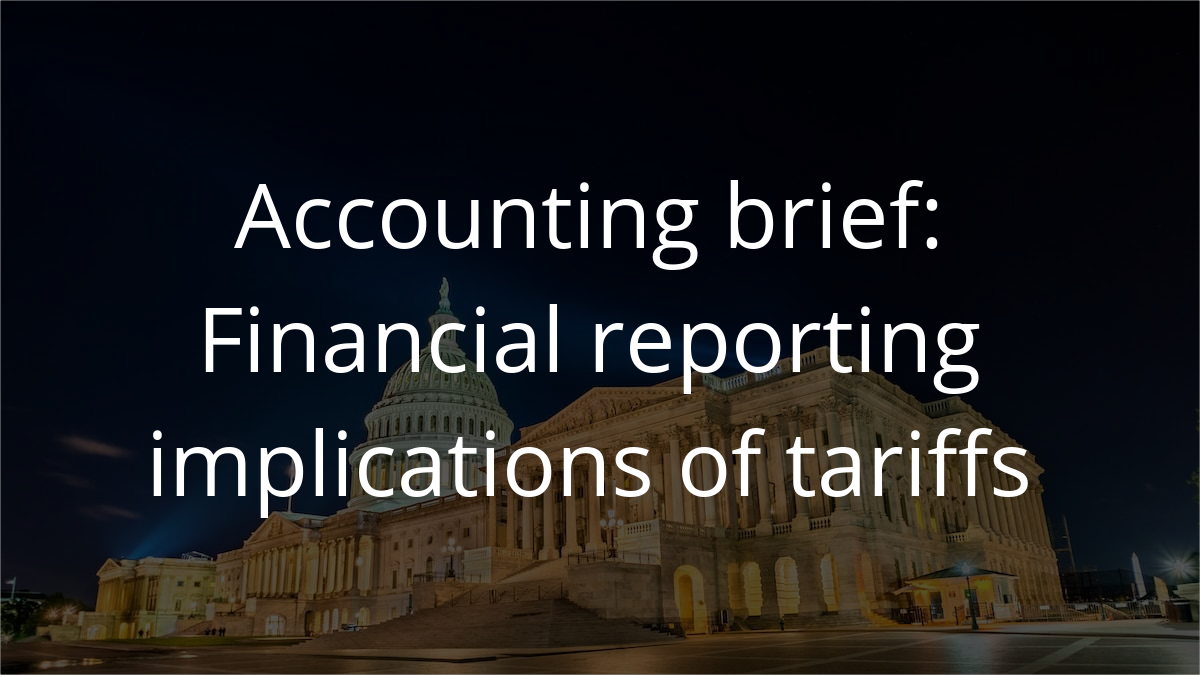ARTICLE | January 12, 2025
The financial health of a nonprofit is the cornerstone of its ability to serve its mission, so it’s essential to be able to identify financial red flags. Key to maintaining this financial health is the role of board members and directors, who oversee the organization’s financial landscape.
This oversight involves understanding and interpreting nonprofit financial statements, recognizing financial red flags, and ensuring effective financial management practices.
Understanding the Nonprofit Financial Landscape
Understanding the nonprofit financial landscape is not just a duty but a necessity for board members and directors. It equips them to make informed decisions, ensure the organization’s financial health, and uphold the trust placed in them by donors, members, and the community at large.
Nonprofit financial statements provide a snapshot of an organization’s financial health and activities. They are a tool for both internal management and external stakeholders. The three primary components of a nonprofit financial statement include:
- Statement of financial position (balance sheet): this provides a picture of the organization’s financial status at a specific point in time. It details the organization’s assets, liabilities, and net assets.
- Statement of activities (income statement): This document shows the organization’s income and expenses over a specific period. It includes details on revenues, expenses, and changes in net assets.
- Statement of cash flow: this report demonstrates how balance sheet and income statement changes affect cash and cash equivalents. It breaks down the cash inflow and outflow into three categories: operating activities, investing activities, and financing activities.
Nonprofit organizations also have unique accounting features that are distinct from those of for-profit businesses. These features primarily revolve around the organization’s revenue sources and expenditure classifications:
- Donations and grants: donations and grants may have donor-imposed restrictions and stipulations. Tracking and reporting these revenues requires meticulous attention to ensure compliance with the restrictions and proper reporting. Nonprofits must present donor-restricted net assets (purpose, time, or permanent/endowment net assets) separately from net assets that are not donor-restricted and available for the general expenditure of the organization.
- Statement of functional expenses: Nonprofits are required to categorize their expenses into three main categories: program expenses, management and general (administrative expenses), and fundraising expenses. Certain nonprofits may also need to present membership development expenses.
- In-kind contributions: Nonprofits often receive non-cash donations, which are typically recognized and valued in the organization’s financial statements.
Identifying Nonprofit Financial Red Flags
Awareness of potential financial red flags can be the difference between guiding your nonprofit successfully forward or unknowingly leading it into financial distress. Here are some of the most common warning signs that board members and directors should watch out for:
Inadequate Reserves
Reserves act as a financial safety net for an organization. If your nonprofit consistently has insufficient funds set aside to cover unexpected costs or revenue shortfalls, this could indicate financial instability. A healthy reserve usually covers at least three to six months of operating expenses or at least 25% of your annual expenses. Certain nonprofits may require a larger reserve based on operations.
To determine the number of months your organization could continue to operate using only reserves, you’ll want to look at the operating reserves ratio. It can be calculated by dividing net assets without donor restriction (those not earmarked for a specific purpose) by monthly expenses. A higher ratio suggests greater financial stability.
Continuous Deficit Spending
Operating occasionally at a deficit may not be a significant problem, especially if it’s part of a planned strategy. However, continuous deficit spending, where your expenses regularly outpace your income, is a red flag. This could lead to the gradual depletion of reserves and, eventually, financial insolvency.
You’ll want to find your current ratio to determine your organization’s ability to meet its short-term financial obligations. This is calculated by dividing current assets (those that can be converted to cash within a year) by current liabilities (those due within a year). A current ratio of 1 or more suggests that your organization can cover its short-term liabilities.
High Dependency on a Single Revenue Source
If a substantial portion of your funding comes from a single source, such as a specific donor, grant, or fundraising event, it could indicate a risk for the organization. Losing that source could critically destabilize your organization. It’s always healthier to have diversified revenue streams.
Rapid Growth or Decline in Finances
Rapid changes in your financial status, whether growth or decline, may indicate potential issues. A sudden surge in funds could mask underlying problems or create them if not managed properly. On the other hand, a swift decline in income or a sudden increase in expenses might signal financial trouble on the horizon.
Excessive Debt
Like businesses, nonprofits can take on debt as a financial strategy. However, high debt levels can burden the organization and threaten its sustainability. The ability to service the debt is key.
Overly Complex Transactions
This could be a red flag if your organization engages in transactions that are difficult to understand or explain. Complex deals may expose the organization to difficult-to-identify and manage risks. They may also raise concerns among auditors and regulators, potentially damaging your organization’s reputation.
These red flags are not definitive proof of financial wrongdoing or impending collapse, but they are signals that deserve attention. By recognizing and responding proactively to these warning signs, board members and directors can steer their nonprofits away from potential pitfalls and towards financial stability.
Analyzing Nonprofit Financial Health Indicators
Quantitative measurements can highlight potential issues and offer comparative data against benchmarks or similar organizations. Here are two key indicators board members and directors should regularly review:
Fundraising Efficiency
This indicator measures the cost-effectiveness of an organization’s fundraising activities. It’s calculated by dividing fundraising expenses by total contributions. A lower ratio indicates that the organization is more efficient at raising funds. Charity Navigator (an organization that evaluates nonprofits and provides donor transparency in the U.S.) generally gives its highest ratings to organizations that spend less than $.10 for every dollar raised.
Program Expense Ratio
Also known as the program efficiency ratio, this indicator assesses how much of the organization’s total expenses are devoted to its core mission. It’s calculated by dividing total program expenses by total expenses. A donor/grantor generally views a higher ratio as better, suggesting that more of the organization’s funds are being used to further its mission directly. Many nonprofits aim for a program expense ratio of 75% or higher. However, since each organization is unique, the nonprofit may find it more helpful to benchmark against its own historical ratios.
Effective Financial Management Practices for Nonprofits
By adopting effective financial management practices, your nonprofit can weather financial challenges and seize opportunities to strengthen its mission.
Regular External Audits
Regular external audits objectively assess your financial practices and help ensure compliance with accounting standards and legal requirements. They can uncover discrepancies, identify areas for improvement, and reassure donors and other stakeholders about your financial integrity.
Regular Financial Monitoring, Reporting, and Compliance
Consistently monitoring your organization’s financial status helps identify trends, red flags, and opportunities. The board should receive regular reports, including updates on income, expenses, cash flow, and comparisons to the budget. For optimal oversight, the board should receive and review these financial statements on a quarterly basis at the very least, although monthly reviews are preferable.
Furthermore, adherence to regulations, particularly those mandated by the IRS, is pivotal in preserving your nonprofit status. This includes the timely filing of Form 990 with the IRS every year. Remember that failing to file your 990 for three consecutive years will result in the loss of your tax-exempt status.
Diversification of Revenue Sources
As the saying goes, don’t put all your eggs in one basket. A healthy mix of funding sources, such as individual donations, grants, corporate sponsorships, fundraising events, and fee-for-service income, can help safeguard your nonprofit from losing any single revenue source.
Implementing Strong Financial Controls
Strong financial controls include procedures to prevent fraud and mismanagement, such as segregation of financial duties, approval processes for expenditures, and regular reconciliation of bank statements. Strong financial controls protect your organization’s resources and boost confidence among your stakeholders.
Consider Outsourced Accounting
Risks escalate when accounting tasks are performed by undertrained individuals or without professional accounting software. Outsourcing accounting functions can help with these concerns. Outsourcing gives your organization access to expert knowledge in nonprofit financial management. Outsourced teams can provide accurate, compliant, and timely financial records, bringing consistency to your operations.
Board’s Role in Navigating Financial Red Flags
The board plays a crucial role in managing financial risks. This involves developing a financially literate board where all members understand nonprofit financial statements and indicators. You may even consider providing new board members with mentors to help them better understand the organization’s procedures.
Furthermore, the board should cultivate an environment where asking challenging questions is welcomed. Questions about unexpected budget variances, fundraising efficiency, the rationale for financial decisions, and potential financial risks can lead to more robust discussions and better decisions.
This article provides a brief overview of nonprofit financial red flags. It is not a substitute for speaking with one of our expert advisors. For more information, please get in touch with us today.
Do you have questions or want to talk?
Call us at (800) 232-9547 or fill out the form below and we’ll contact you to discuss your specific situation.




